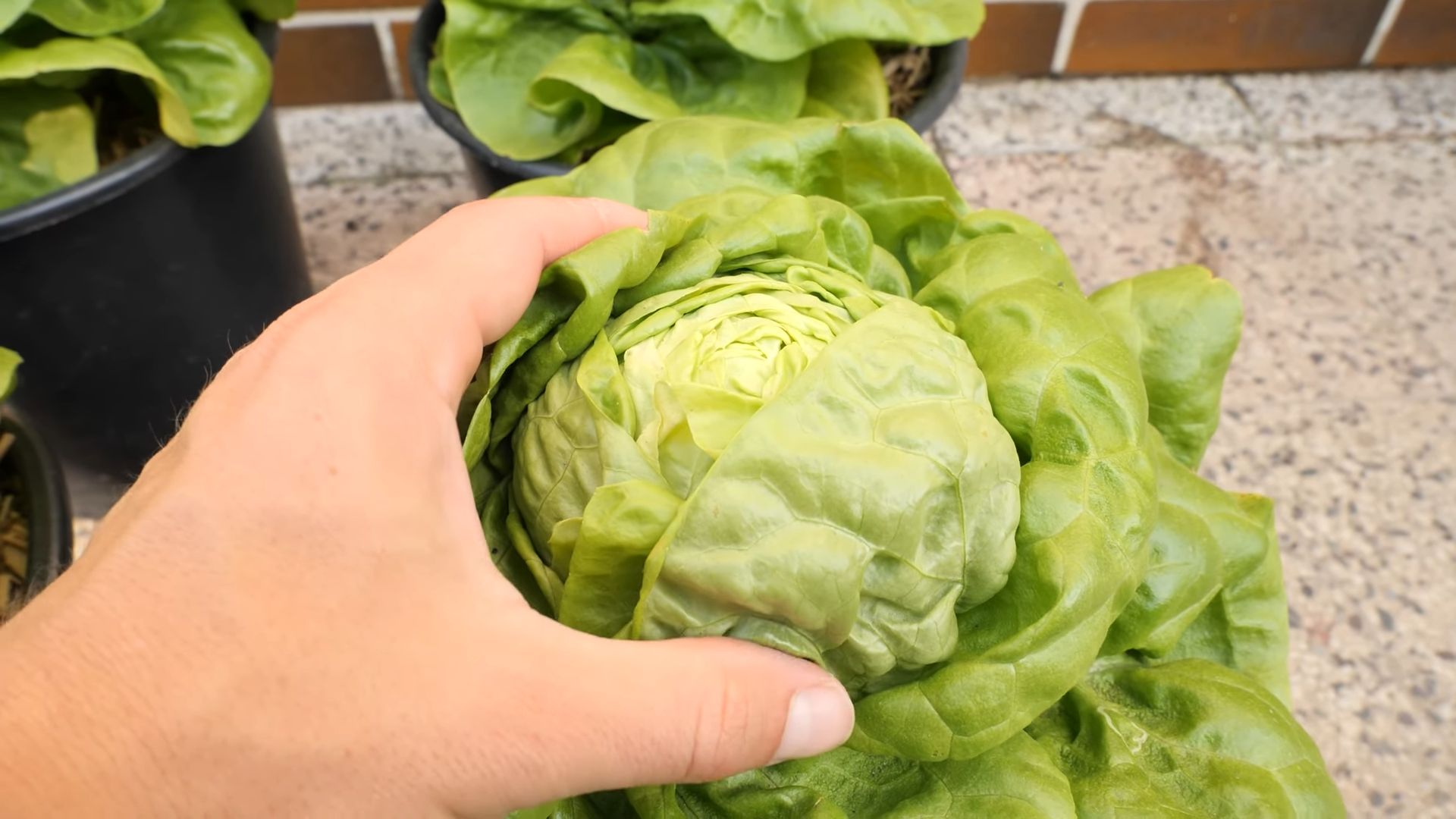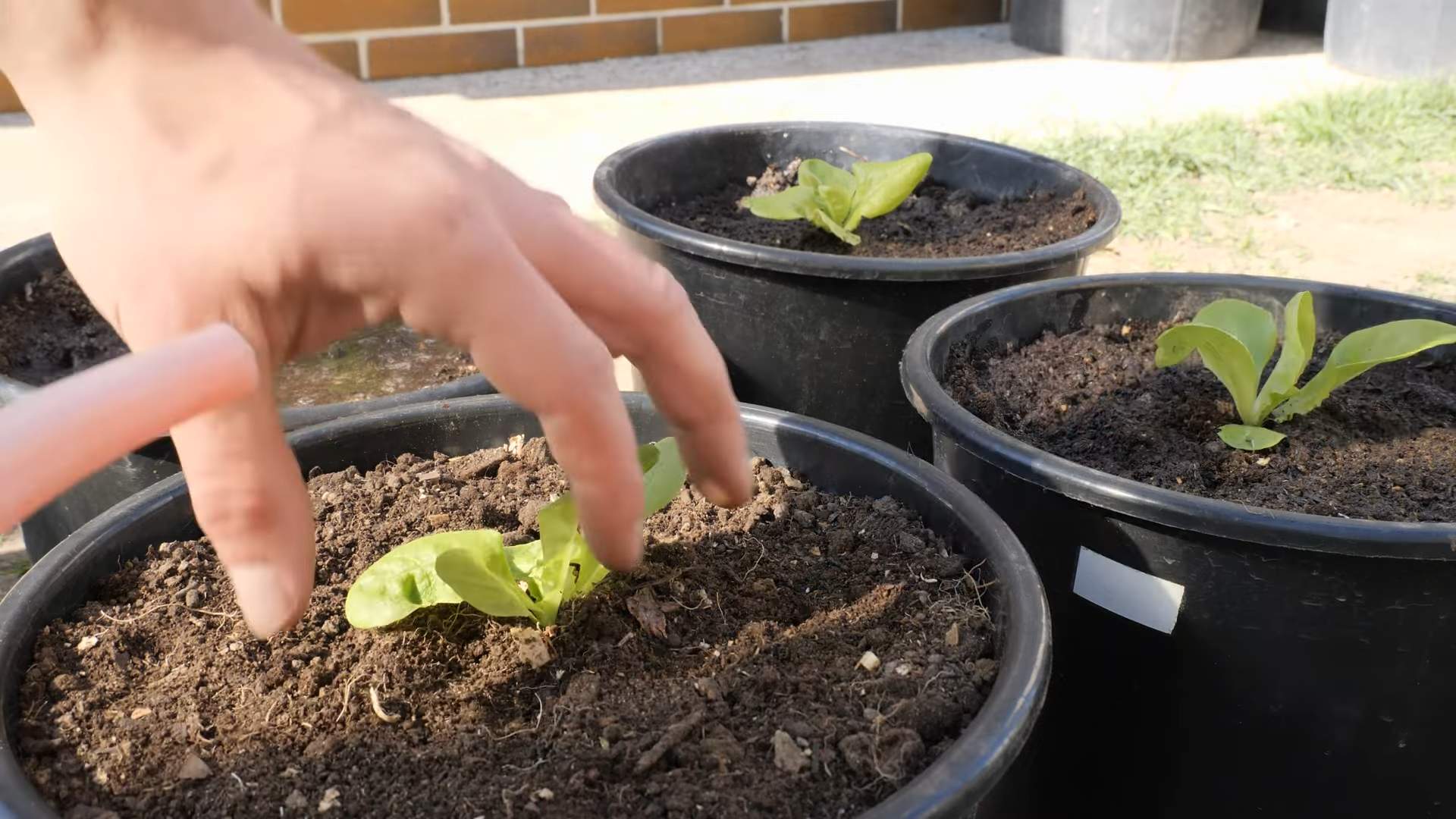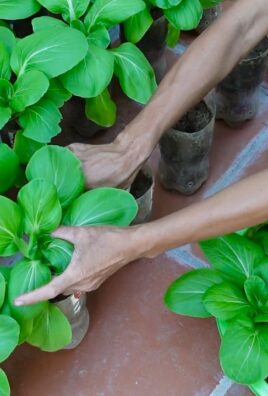Grow Lettuce in Small Spaces
I’ve always loved the idea of fresh, homegrown lettuce, but living in a small apartment, I used to think it was an impossible dream. Then I discovered the amazing world of small-space gardening, and let me tell you, it’s changed everything! This article is packed with clever grow lettuce in small spaces tricks and DIY projects that will help you harvest your own crisp, delicious lettuce, no matter how limited your outdoor space might be.
The history of lettuce cultivation is surprisingly rich, dating back thousands of years to ancient Egypt and beyond. It’s been a staple in cuisines worldwide for centuries, prized for its refreshing taste and nutritional value. But today, access to fresh, high-quality produce isn’t always easy, especially if you live in a city or lack a large garden. That’s where these grow lettuce in small spaces techniques come in handy.
Why You Need These DIY Hacks
Growing your own lettuce offers incredible benefits beyond just the delicious taste. You’ll know exactly where your food comes from, avoiding pesticides and other potentially harmful chemicals. Plus, there’s something incredibly satisfying about nurturing a plant from seed to salad! Whether you’re a seasoned gardener or a complete beginner, these simple DIY projects and grow lettuce in small spaces tips will empower you to create your own little green oasis, even if you only have a balcony, windowsill, or a tiny patch of land.
So, grab your gardening gloves and let’s get started on your journey to fresh, homegrown lettuce! I’ll guide you through everything from choosing the right varieties to building your own vertical garden, ensuring you have a bountiful harvest no matter the size of your space.

Growing Lettuce in Small Spaces: A DIY Guide
I love fresh lettuce, but I don’t have a huge garden. So I figured out how to grow delicious lettuce even in the tiniest of spaces! This guide will walk you through everything you need to know.
Choosing Your Lettuce and Growing Method
- Select the right lettuce variety: Loose-leaf lettuces like Red Sails or Black Seeded Simpson are perfect for small spaces because they don’t need as much room to spread out as head lettuces. Baby leaf varieties are also excellent choices for quick harvests. Consider your space and choose accordingly. If you have very limited space, consider growing vertically!
- Decide on your growing method: You have several options: containers (pots, window boxes, even repurposed items!), vertical gardening systems (DIY or store-bought), or even a small raised bed if you have a little outdoor space. I’ll cover container gardening in detail below, as it’s the most versatile for small spaces.
- Consider your light source: Lettuce needs at least 6 hours of sunlight daily. If you’re growing indoors, a sunny windowsill is ideal. For less sunny locations, consider grow lights. I’ll explain how to use grow lights later.
Getting Started: Preparing Your Container and Soil
1. Choose your container: Almost any container will work, as long as it has drainage holes. I’ve used everything from old terracotta pots to repurposed plastic containers. Make sure the container is large enough for your chosen lettuce variety – at least 6 inches in diameter is recommended for most loose-leaf lettuces. For vertical gardening, you’ll need a system that allows for adequate spacing between plants.
2. Add drainage holes: If your container doesn’t have drainage holes, you’ll need to drill some. This is crucial to prevent root rot. Use a drill bit slightly smaller than the desired hole size to avoid cracking the container.
3. Select your soil: Use a high-quality potting mix specifically designed for vegetables. Avoid using garden soil, as it can be too heavy and compact for containers. A good potting mix will provide excellent drainage and aeration.
4. Fill your container: Fill your container with the potting mix, leaving about an inch of space from the top. Gently firm the soil to settle it.
Planting Your Lettuce Seeds or Seedlings
1. Starting from seeds: If starting from seeds, sow them about ¼ inch deep and 1-2 inches apart. Gently cover with soil and water thoroughly. Keep the soil consistently moist but not soggy. You can use a spray bottle for gentle watering to avoid disturbing the seeds.
2. Starting from seedlings: Buying seedlings from a garden center is a faster way to get a harvest. Gently remove the seedlings from their containers and plant them at the same depth they were growing in. Space them according to the package instructions.
3. Watering: Water your lettuce regularly, keeping the soil consistently moist but not waterlogged. Overwatering can lead to root rot, while underwatering will stunt growth. Check the soil moisture daily, especially during hot weather. The best way to water is to water deeply and less frequently.
4. Thinning (if starting from seeds): If you started from seeds, you’ll need to thin them once they have a few true leaves. This means removing some of the seedlings to give the remaining plants enough space to grow. Carefully pull out the weaker seedlings, leaving the strongest ones about 4-6 inches apart for loose-leaf varieties.
Caring for Your Lettuce
1. Sunlight: Ensure your lettuce receives at least 6 hours of sunlight per day. If growing indoors, place your container in a sunny windowsill. If natural light is insufficient, supplement with grow lights. I recommend using full-spectrum grow lights to ensure your plants receive the appropriate light wavelengths for healthy growth.
2. Watering: Consistent watering is key. Water deeply but less frequently, allowing the top inch of soil to dry slightly between waterings. Avoid overhead watering, as this can lead to fungal diseases. Water at the base of the plants.
3. Fertilizing: Feed your lettuce every 2-3 weeks with a balanced liquid fertilizer diluted to half strength. Over-fertilizing can burn the plants, so follow the instructions on the fertilizer packaging carefully.
4. Pest and disease control: Regularly inspect your lettuce for pests and diseases. Common pests include aphids and slugs. You can control them using organic methods such as insecticidal soap or diatomaceous earth. Good air circulation can help prevent fungal diseases.
5. Harvesting: You can start harvesting your lettuce when the leaves are large enough. For loose-leaf varieties, you can harvest individual leaves as needed, allowing the plant to continue growing. For head lettuces, harvest the entire head once it reaches maturity.
Troubleshooting Common Problems
Bolting
Bolting is when the lettuce plant sends up a flower stalk, making the leaves bitter and tough. This is often caused by heat stress or long days. To prevent bolting, choose heat-tolerant varieties, provide shade during the hottest part of the day, and harvest frequently.
Pests
Aphids and slugs are common lettuce pests. Use insecticidal soap or diatomaceous earth to control them. You can also handpick slugs in the evening.
Diseases
Fungal diseases can be a problem, especially in humid conditions. Ensure good air circulation and avoid overhead watering.
Nutrient Deficiencies
Yellowing leaves can indicate a nutrient deficiency. Use a balanced liquid fertilizer to provide the necessary nutrients.
Vertical Gardening for Maximum Space Efficiency
If you’re really short on space, consider vertical gardening. You can build a simple vertical garden using PVC pipes, pallets, or even repurposed shelves. The key is to create a system that allows the lettuce plants to grow upwards, maximizing your space. There are many tutorials online for building DIY vertical gardens. Remember to ensure adequate spacing between plants for optimal growth. Vertical gardening can significantly increase your yield in a small area. It’s a fantastic way to maximize your growing space.

Conclusion
So there you have it! A simple, effective, and surprisingly rewarding method for growing your own delicious lettuce, even if you’re severely limited on space. This DIY grow lettuce in small spaces technique isn’t just about saving money on groceries; it’s about connecting with nature, enjoying the freshest possible greens, and experiencing the immense satisfaction of nurturing life from seed to plate. The ability to harvest crisp, vibrant lettuce leaves right from your kitchen windowsill or balcony is incredibly empowering, and the minimal effort required makes it accessible to everyone, regardless of gardening experience. This method truly democratizes fresh produce, bringing the bounty of the garden to even the smallest urban dwellings.
Beyond the basic method outlined, the possibilities for customization are endless. Experiment with different lettuce varieties – from butterhead to romaine to loose-leaf – to discover your favorites. Consider adding other leafy greens to your setup, such as spinach, kale, or arugula, for a diverse and nutritious harvest. You can also explore vertical gardening techniques, using stacked containers or hanging planters to maximize your space even further. For those with slightly more space, consider building a small raised bed or utilizing a repurposed container, such as an old wooden crate or a large plastic tub. The key is to adapt the method to your specific environment and preferences.
Don’t be afraid to get creative! Try different growing mediums, such as coco coir or perlite, to see what works best for you. Experiment with different lighting solutions, such as grow lights or strategically placed windows, to ensure your lettuce receives optimal sunlight. And most importantly, have fun with it! Gardening should be an enjoyable experience, and this method is designed to make it easy and rewarding.
We strongly encourage you to try this DIY grow lettuce in small spaces method and share your experience with us! Post pictures of your thriving lettuce plants on social media using the hashtag #GrowLettuceSmallSpaces. We’d love to see your successes and learn from your experiences. Let’s build a community of urban gardeners, sharing tips, tricks, and the joy of homegrown goodness. Remember, even the smallest space can yield a bountiful harvest, and the taste of homegrown lettuce is simply unparalleled.
Frequently Asked Questions
What type of lettuce is best for small-space growing?
Loose-leaf lettuces are generally the easiest to grow in small spaces because they don’t require as much room to mature as head lettuces like romaine or butterhead. However, with proper care and attention, you can successfully grow many varieties in containers.
How much sunlight do lettuce plants need?
Lettuce prefers at least 6 hours of sunlight per day. If you don’t have access to direct sunlight, you can supplement with grow lights. However, even with grow lights, ensure adequate ventilation to prevent fungal diseases.
What kind of container should I use?
Almost any container will work, as long as it has drainage holes to prevent root rot. Consider using containers that are at least 6 inches deep to allow for adequate root growth. Repurposed containers, such as plastic tubs or wooden crates, are a great eco-friendly option.
How often should I water my lettuce?
Water your lettuce regularly, keeping the soil consistently moist but not soggy. The frequency of watering will depend on factors such as the size of your container, the type of growing medium, and the ambient temperature. Check the soil moisture regularly and water when the top inch feels dry.
What if my lettuce plants start to bolt?
Bolting, or the premature flowering of lettuce, is often caused by heat stress. To prevent bolting, ensure your lettuce plants receive adequate shade during the hottest parts of the day. You can also try planting heat-tolerant varieties.
Can I use tap water to water my lettuce?
Generally, tap water is fine, but it’s best to let it sit out for 24 hours to allow chlorine to dissipate. If your tap water is particularly hard, consider using filtered water or rainwater.
What are some common pests and diseases that affect lettuce?
Common pests include aphids, slugs, and snails. Common diseases include downy mildew and leaf spot. Regularly inspect your plants for signs of pests or diseases and take appropriate action, such as using insecticidal soap or neem oil for pests, or removing affected leaves for diseases.
How long does it take to harvest lettuce?
The time it takes to harvest lettuce depends on the variety and growing conditions. Generally, loose-leaf lettuces are ready for harvest in about 4-6 weeks, while head lettuces may take 8-10 weeks.
Can I grow lettuce indoors year-round?
Yes, with the use of grow lights, you can successfully grow lettuce indoors year-round, regardless of the outdoor weather conditions. This makes it a perfect option for those who want fresh lettuce all year long.
What should I do with my harvested lettuce?
Enjoy it immediately in salads, sandwiches, or as a side dish! You can also store it in the refrigerator for a few days in a plastic bag or container lined with paper towels to absorb excess moisture.





Leave a Comment